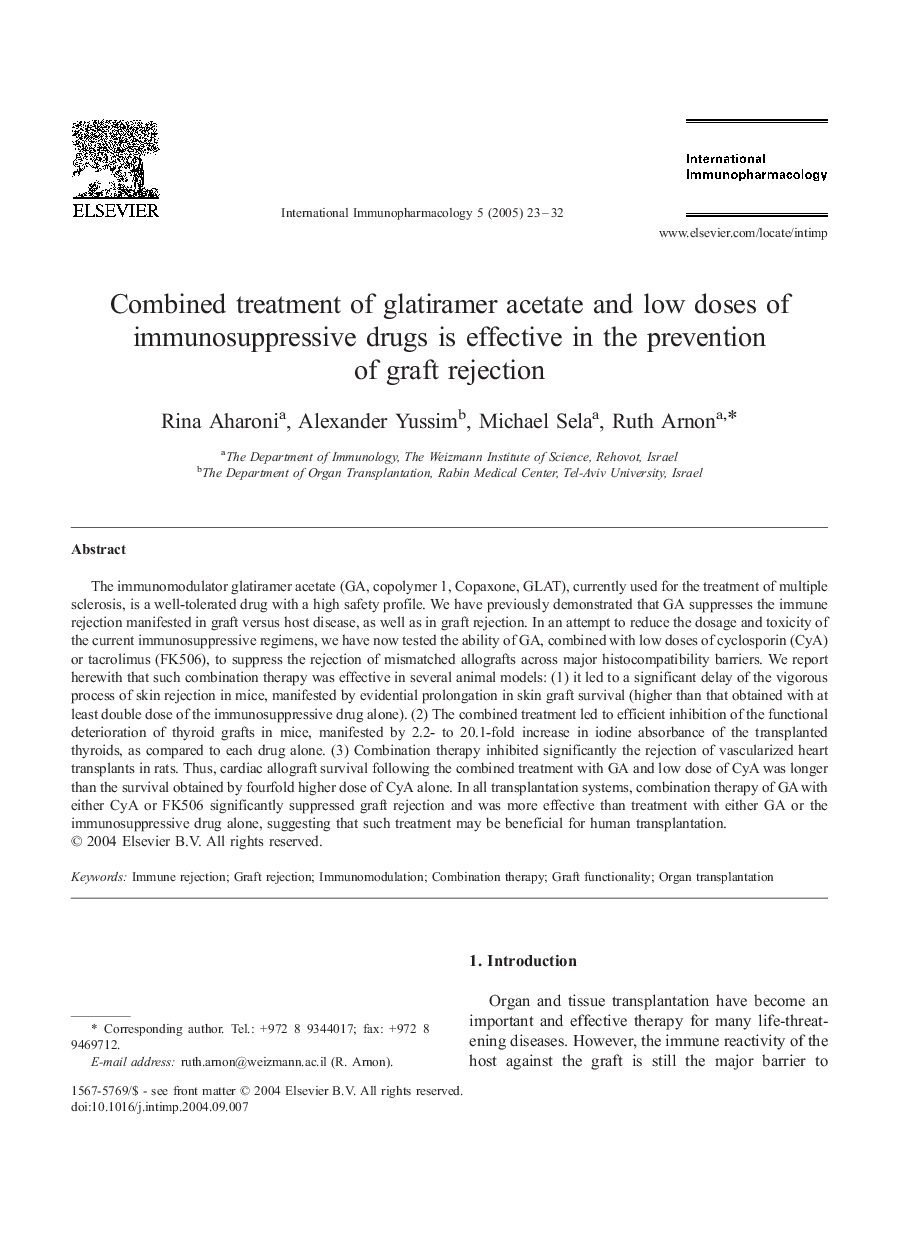| Article ID | Journal | Published Year | Pages | File Type |
|---|---|---|---|---|
| 9008194 | International Immunopharmacology | 2005 | 10 Pages |
Abstract
The immunomodulator glatiramer acetate (GA, copolymer 1, Copaxone, GLAT), currently used for the treatment of multiple sclerosis, is a well-tolerated drug with a high safety profile. We have previously demonstrated that GA suppresses the immune rejection manifested in graft versus host disease, as well as in graft rejection. In an attempt to reduce the dosage and toxicity of the current immunosuppressive regimens, we have now tested the ability of GA, combined with low doses of cyclosporin (CyA) or tacrolimus (FK506), to suppress the rejection of mismatched allografts across major histocompatibility barriers. We report herewith that such combination therapy was effective in several animal models: (1) it led to a significant delay of the vigorous process of skin rejection in mice, manifested by evidential prolongation in skin graft survival (higher than that obtained with at least double dose of the immunosuppressive drug alone). (2) The combined treatment led to efficient inhibition of the functional deterioration of thyroid grafts in mice, manifested by 2.2- to 20.1-fold increase in iodine absorbance of the transplanted thyroids, as compared to each drug alone. (3) Combination therapy inhibited significantly the rejection of vascularized heart transplants in rats. Thus, cardiac allograft survival following the combined treatment with GA and low dose of CyA was longer than the survival obtained by fourfold higher dose of CyA alone. In all transplantation systems, combination therapy of GA with either CyA or FK506 significantly suppressed graft rejection and was more effective than treatment with either GA or the immunosuppressive drug alone, suggesting that such treatment may be beneficial for human transplantation.
Related Topics
Life Sciences
Immunology and Microbiology
Immunology
Authors
Rina Aharoni, Alexander Yussim, Michael Sela, Ruth Arnon,
